Resources

In this book, Elisabeth Schüssler Fiorenza continues her exploration of a radical democratic ethos in graduate biblical education. She argues that it is necessary to reframe the field of biblical studies and replace the competitive teaching models prevalent in graduate programs with an emancipatory, radical democratic pedagogical model that fosters collaboration, participation, and critical engagement. To achieve constructive engagement with the differences of social location and diversity of perspectives that exist both in the Bible and in our contexts, we must become aware of the pitfalls of one-dimensional thinking that seeks to use the Bible to find definite answers and to exclude different understandings. Schüssler Fiorenza addresses such questions as, What are the educational practices and procedures that are advocated by traditional educational models and how can they be changed? What kind of educational and communicative practices do biblical studies need to develop in order to fashion an emancipatory democratizing rhetorical space and a forum of many voices? To envision, articulate, debate, and practice a radical democratic ethos of biblical studies, she identifies emerging didactic models that can foster such a radical democratic style of learning. (From the Publisher)
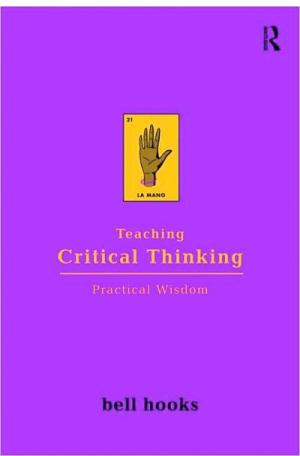
In Teaching Critical Thinking, renowned cultural critic and progressive educator bell hooks addresses some of the most compelling issues facing teaching issues facing teachers in and out of the classroom today. In a series of short, accessible, and enlightening essays, hooks explores of the confounding and sometimes controversial topics that teachers and students have urged her to address since the publication of the previous best-selling volums in her Teaching series, Teaching to Transgress and Teaching Community. The issues are varied and broad, from whether meaningful teaching can take place in a large classroom setting to confronting issues of self-esteem. One professor, for example, asked how black female professors can maintain positive authority in a classroom without being seen through the lens of negative racist, sexist stereotypes. One teacher asked how to handle tears in the classroom. while another wanted to know how to use humor as a tool for learning. Addressing questions of race, gender, and class in this work, hooks discusses the complex balance that allows us to teach, value, and learn from works written by racist and sexist authors. Highlighting the importance of reading, she insists on the primacy of free speech, a democratic education of literacy. Throughout these essays, she celebrates the transformative power of critical thinking. This is provocative, powerful, and joyful intellectual work. It is a must read for anyone who is at all interested in education today. (From the Publisher)

As in her other work, JoAnn Moody demonstrates a keen understanding of the day-to-day challenges of faculty issues, drawing from careful research as well as from close connections to the issues facing early-stage faculty. She reminds us that effective mentoring is designed around a flexible set of approaches and cannot be based on what she appropriately labels myths.
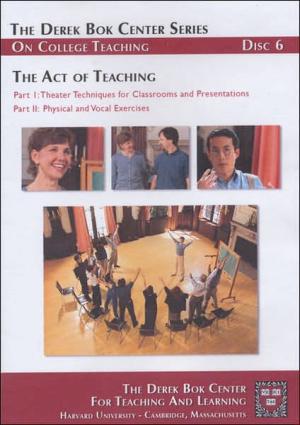
Teachers can convey their ideas more powerfully if they take time to improve their presentation skills. The Act of Teaching , Nancy Houfek, Head of Voice and Speech for the American Repertory Theatre at Harvard University, leads a workshop that stresses the importance of communication with the whole self in order to reach an audience. Throughout the workshop, she introduces participants to the same techniques that actors use to prepare and deliver a performance, including warm-ups, relaxation, strengthening, and visualizing exercises. In Part I, Theater Techniques for Classroom and Presentation, Houfek focuses on overcoming stage fright, knowing your objectives, and "landing your message." In part II, Physical and Vocal Exercises , she leads teachers through 20 minutes of exercises specifically designed to prepare them for the physical challenges of the classroom, beginning with "Waking Up the Body," and moving to vocal warm-ups that treat the voice as an instrument requiring care. Together, these techniques and exercises present a new set of resources that greatly broaden the avenues we customarily use in communicating with colleagues and students. An illustrated guide to exercises is included ad a PDF. (From the Publisher)
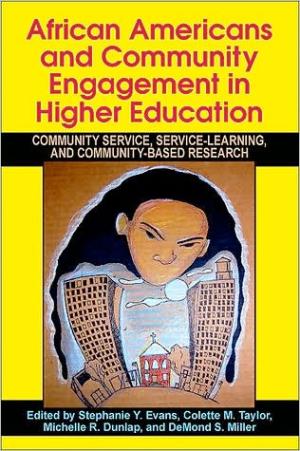
This book discusses race and its roles in university-community partnerships. The contributors take a collaborative, interdisciplinary, and multiregional approach that allows students, agency staff, community constituents, faculty, and campus administrators an opportunity to reflect on and redefine what impact African American identity-in the academy and in the community-has on various forms of community engagement. From historic concepts of "race uplift" to contemporary debates about racialized perceptions of need, they argue that African American identity plays a significant role. In representing best practices, recommendations, personal insight, and informed warnings about building sustainable and mutually beneficial relationships, the contributors provide a cogent platform from which to encourage the difficult and much-needed inclusion of race in dialogues of national service and community engagement. "This book validates the African proverb 'it takes a village to raise a child.' The topics are right on the mark and highlight the benefits of service-learning as an instrument of individual and community involvement and empowerment." - Festus E. Obiakor, coeditor of Culturally Responsive Literacy Instruction (From the Publisher)
Many college students are interested in spirituality and the "big questions" about life's meaning and values, but many professors seem not to know how to respond to that interest. In this article, the author offers several strategies to help students confront the "big questions". One way is to structure assignments and discussions so that students can have a chance to bring critical thinking directly into relationship with their own experiences and beliefs.
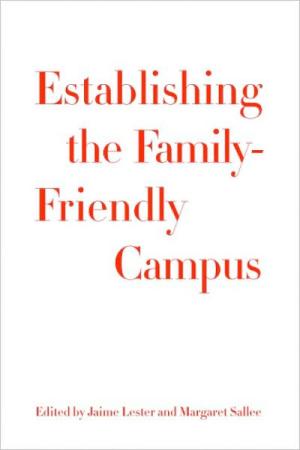
The impact of changing demographics in higher education, and the importance of family-friendly policies, is well documented. There is an urgent need to keep PhDs in the higher education sector, to recruit talented scholars into academia, and retain them over the course of their academic careers. The key is instituting policies to enable all constituencies to balance work and personal responsibilities. This book covers the range of issues faced by all generations in academe, from PhD students, to the "sandwich generation" (those caring for children and aging parents simultaneously) through to older faculty and administrators. It addresses the causes for women faculty with children leaving the academy at a disproportionately higher rate than men, the conflicts women face between academic work and motherhood, and the difficulties they encounter in reentering the academy after having left the professoriate. In examining the need for family-friendly policies, this book documents the "best practices" currently in use at institutions across the United States. Each chapter highlights practices and programs from a variety of institutions and institutional types that address the needs of a more inclusive family-friendly campus and offers suggestions to others who are implementing similar change on their campuses. These examples provide context so that readers no longer have to develop practices in isolation, and without evidence of their effectiveness. The editors suggest that the most successful campuses are those that utilize a work-life systems framework to meet the needs of its employees. They also point to future growth trends, including expanding the focusfrom faculty and staff to incorporate all in the campus community. This book offers guidance to department chairs, deans, faculty, administrators, and graduate students on setting a family-friendly agenda, and models for implementation. Contributors include Emily Arms, Kathleen Beauchesne, Jill Bickett, Sharon A. Dannels, Mariko Dawson Zare, Karie Frasch, Marc Goulden, Jeni Hart, Caryn Jung, Jaime Lester, Sharon A. McDade, Jean McLaughlin, Mary Ann Mason, Sharon Page-Medrich, Kate Quinn, Margaret Sallee, Randi Shapiro, Angelica Stacy, Dave Swihart, Gloria D. Thomas, Darci Thompson. (From the Publisher)
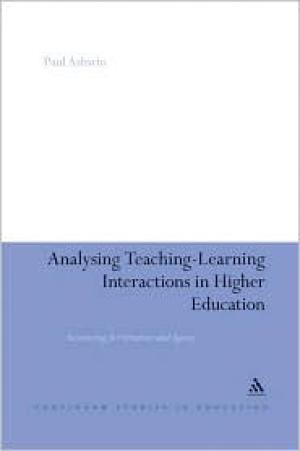
A key monograph investigating the research, development, policy and practice of teaching and learning in Higher Education. (From the Publisher)
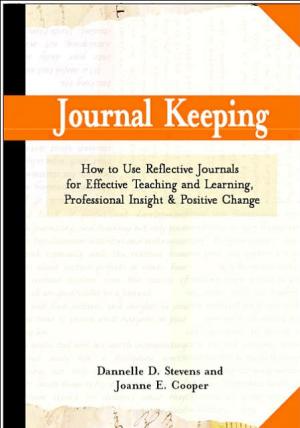
** By the authors of the acclaimed Introduction to Rubrics ** Major growth of interest in keeping journals or diaries for personal reflection and growth; and as a teaching tool ** Will appeal to college faculty, administrators and teachers One of the most powerful ways to learn, reflect and make sense of our lives is through journal keeping. This book presents the potential uses and benefits of journals for personal and professional development-particularly for those in academic life; and demonstrates journals' potential to foster college students' learning, fluency and voice, and creative thinking. In professional life, a journal helps to organize, prioritize and address the many expectations of a faculty member's or administrator's roles. Journals are effective for developing time management skills, building problem-solving skills, fostering insight, and decreasing stress. Both writing and rereading journal entries allow the journal keeper to document thinking; to track changes and review observations; and to examine assumptions and so gain fresh perspectives and insights over past events. The authors present the background to help readers make an informed decision about the value of journals and to determine whether journals will fit appropriately with their teaching objectives or help manage their personal and professional lives. They offer insights and advice on selecting the format or formats and techniques most appropriate for the reader's purposes. (From the Publisher)

The definitive coursebook for Higher Education. (From the Publisher)